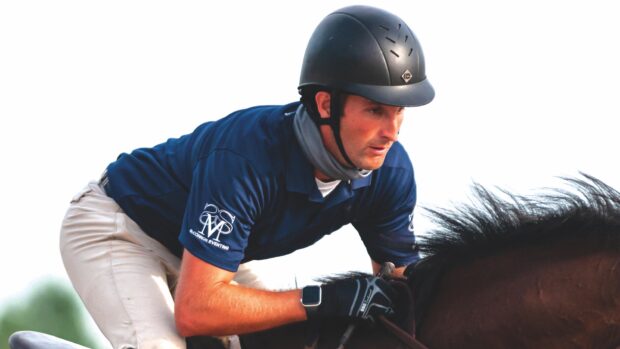New data has shone a light on riders’ attitudes to noseband tightness – as Canada takes steps towards implementing new tack rules.
In January, H&H reported that Equestrian Canada (EC) had launched a noseband-measuring pilot project, with the view of implementing a rule that reflects scientific recommendations; that a horse’s noseband “should not be tight enough to prevent the placement of two adult fingers between the noseband and the frontal nasal plane” (news, 13 January).
Currently EC’s rules say that abuse of horses at EC-sanctioned competitions is not tolerated. Acts of cruelty can include nosebands used in such a way that they interfere with the horse’s breathing, or tight enough to cause pain or discomfort.
As part of the project stewards measured the tightness of 551 nosebands across 32 competitions using the International Society for Equitation (ISES) taper gauge, a tool that precisely measures the space between the noseband and nasal plane. More than 1,500 EC members also took part in a survey on noseband fit – and potential rule changes.
Researchers have now published the findings from the work, in Animals. Of the 551 measurements taken, 71% passed the 1.5cm (two fingers) measurement; 19% passed 1cm (one finger); and 10% were too tight to fit the taper gauge. Stewards unanimously agreed that over-tightened nosebands present a welfare issue; 60% believed the current rules are sufficient and 40% did not. Stewards also commented on other issues, such as nosebands being positioned too high or too low.
Of the 1,528 survey respondents, only 181 professional riders felt over-tightened nosebands were a welfare issue, compared to 613 amateur competitors. Overall, 326 of respondents said being able to fit only one finger between the noseband and nasal plane was acceptable. Just over 74% of respondents mostly agreed that all disciplines should have the same standardised rules for noseband fit and that a measurement gauge was a fair method to measure this – but only 65% agreed that noseband fit should be measured at the nasal plane.
The researchers discussed that noseband fit depended on many factors, including the breed and conformation of the horse and the type of noseband used.
“While the noseband taper gauge admittedly cannot account for all types of head conformation, it is within the realm of science to create a gauge that could,” they said.
“For now, though, a standardised rule across the board may not be well received by competitors who already feel weighed down by rules.”
The researchers concluded that misinformation and misunderstanding of noseband research was evident, indicating a need for the education of riders and coaches on the importance of appropriate noseband fit – and the consequences of over-tightened nosebands.
“Making nosebands optional in disciplines that currently require them was suggested. Despite differing viewpoints, there was a clear desire to improve equine quality of life,” they said.
An EC spokesman told H&H the body launched the project to investigate the need for and acceptance of new standards to noseband measuring, before they formulated a rule-change proposal.
“EC is keen to share and support the results of the paper as well as the data collected to further inform the community and provide information regarding the rule change proposal that has been submitted to the national rules committee,” said the spokesman.




